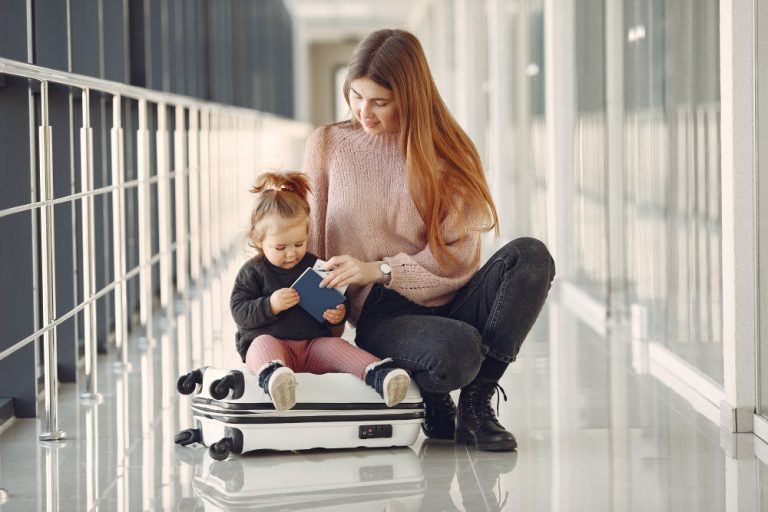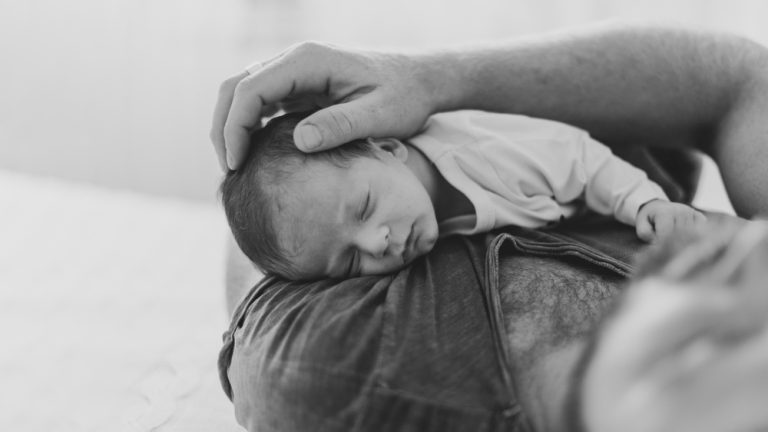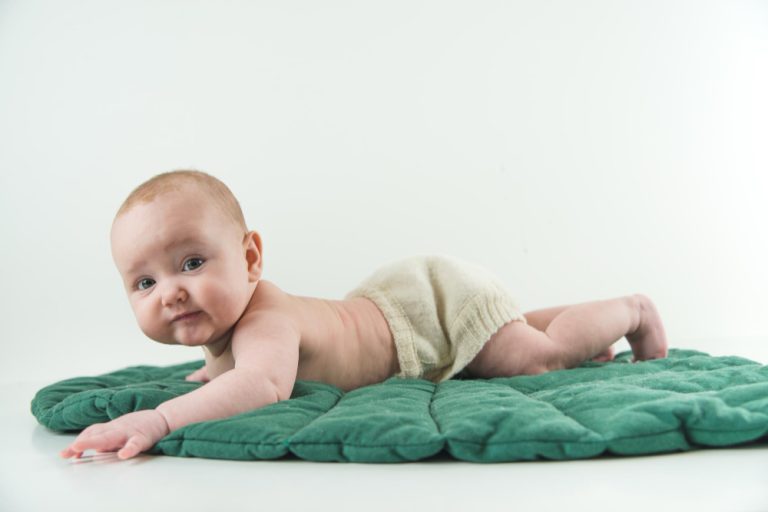When Can Babies Sleep On Stomach? Baby Stomach Sleeping
Are you tired of constantly worrying about your little one’s sleep patterns? Do you find yourself wondering when can babies sleep on stomach? Are you eagerly looking for signs that your baby is ready for this milestone?
But safety always comes first. Let’s explore the guidelines and risks associated with stomach sleeping for infants, delving into the nuances of promoting safe sleep practices.
In this blog, we will guide you through the important aspects of when can babies sleep on stomach, ensuring you have the knowledge to create a safe sleep environment. From the risks of sudden infant death syndrome to the significance of tummy time, we will cover it all. Stay informed, stay prepared, and provide your little one with the utmost care during their precious sleep time.
Introduction: When Can Babies Sleep On Stomach

Safe sleep practices are crucial for the well-being of infants. As a parent, ensuring that your baby sleeps in a safe and secure environment is of utmost importance. One common concern among parents is when can babies sleep on stomach?
While it may seem natural for babies to sleep on their tummies, there are important guidelines to follow to promote safe sleep practices and reduce the risk of Sudden Infant Death Syndrome (SIDS) and other potential dangers associated with stomach sleeping.
According to the American Academy of Pediatrics, babies should always be placed on their backs to sleep during their first year of life. This sleeping position has been proven to decrease the risk of SIDS. It is essential to understand the signs that indicate when a baby is ready for stomach sleeping and create a safe sleep environment accordingly.
In this article, we will delve into the topic of when can babies sleep on stomach and provide valuable information on promoting safe sleep practices for infants.
By following these guidelines, you can ensure that your little one sleeps comfortably and securely throughout the night.
When Can I Put My Baby To Sleep on Their Stomach?

As a parent, ensuring the safety of your baby during sleep is of utmost importance. However, it is crucial to understand that putting your baby to sleep on their stomach is not recommended due to the various risks involved.
The American Academy of Pediatrics strongly advises practicing back sleeping for infants to reduce the risk of Sudden Infant Death Syndrome (SIDS) and other sleep-related accidents.
- Sleeping on the stomach increases the likelihood of suffocation, overheating, and choking for babies, especially during their first year.
- Babies have immature airways and less head control, which puts them at a higher risk for breathing difficulties when sleeping on their stomachs.
- Additionally, blankets and other loose bedding can cover their face, leading to suffocation.
To create a safe sleep environment for your baby:
- Firstly, always place your baby on their back to sleep, both during naps and at nighttime.
- This sleep position has been proven to reduce the risk of SIDS.
- Ensure that the crib mattress is firm and covered with a fitted sheet.
- Avoid using pillows, soft bedding, or crib bumpers, as they can pose a suffocation hazard.
- Keeping the infant’s sleeping space cool and well-ventilated is essential to prevent overheating.
- Dress your baby in light and breathable clothing suitable for room temperature.
It is recommended to keep your baby’s sleep area in the same room as you, ideally for the first six months. This allows for close monitoring during sleep and ensures quick response to any potential issues that may arise.
Remember to never smoke around your baby, as exposure to secondhand smoke increases the risk of SIDS.
Additionally, offering a pacifier during sleep time has shown a decreased risk of SIDS. However, if your baby refuses the pacifier, do not force it.
Adhering to these safe sleep practices can provide a secure and comfortable sleep environment for your baby while minimizing the risks associated with stomach sleeping. Always consult with your healthcare provider for personalized guidance and recommendations tailored to your baby’s specific needs.
How do I know if my baby is ready for stomach sleeping?

As a parent, it’s natural to wonder when your baby can start sleeping on their stomach. However, it’s important to prioritize their safety and follow the guidelines provided by healthcare professionals.
Here are some signs that indicate your baby may be ready for stomach sleeping:
1. Good head control
- When your baby has developed strong neck muscles and can consistently hold their head up while lying on their tummy, it may indicate readiness for stomach sleeping.
- This is typically around the age of 4 to 6 months.
2. Rolling over both ways
- If your baby has mastered the skill of rolling from their back to their tummy and vice versa, it suggests they have the mobility to adjust their position during sleep.
- This is an important milestone that indicates readiness for stomach sleeping.
3. No longer using a swaddle
- Swaddling is a common practice to soothe newborns, but as babies grow, they need more freedom of movement during sleep.
- If your little one has transitioned out of swaddling and can freely move their arms and legs, it may be a sign that they are ready for stomach sleeping.
4. Rolling onto the tummy during the night
- Some babies have a natural inclination to roll onto their tummy during sleep, even if they were initially placed on their backs.
- If you consistently find your baby sleeping on their stomach and they are displaying good head control and rolling skills, it may be an indication that they prefer this position.
However, it’s important to consult with a healthcare provider before allowing your baby to sleep on their stomach.
Every baby is unique, and your healthcare provider can assess their individual development and advise on the best sleep practices. They can evaluate if your baby has reached the necessary milestones and discuss any potential risks associated with stomach sleeping.
Remember, creating a safe sleep environment is crucial regardless of your baby’s sleep position. Follow the guidelines provided by organizations like the American Academy of Pediatrics, ensure a firm and flat sleep surface, remove loose bedding, and maintain a comfortable room temperature to promote safe and peaceful sleep for your baby.
Partner with your medical provider
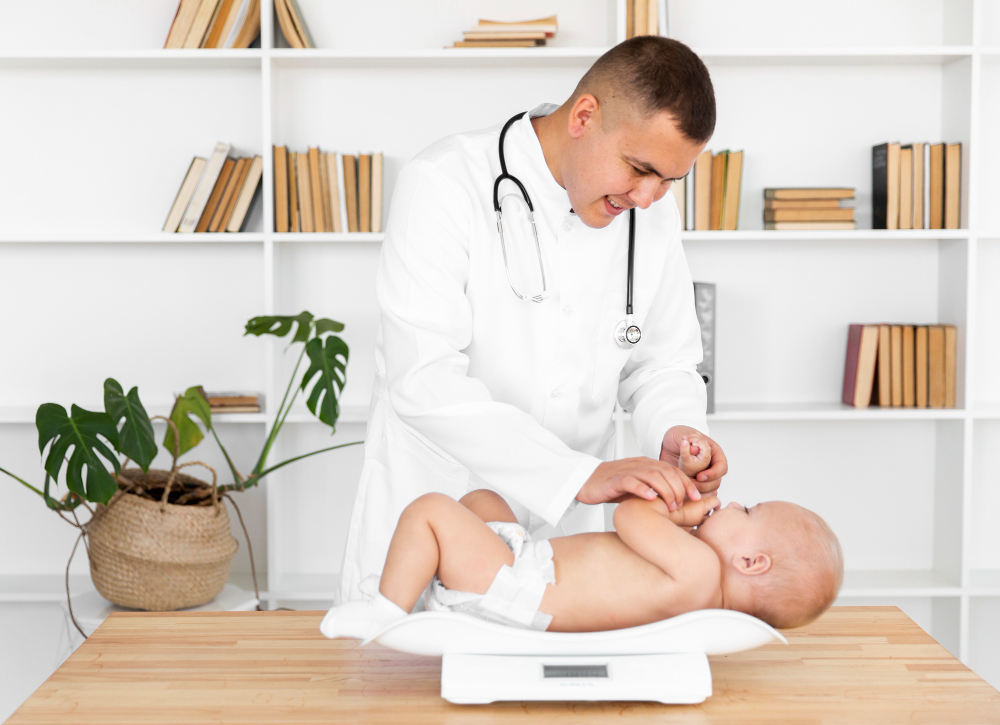
Partnering with your medical provider is crucial when it comes to safe sleep practices for your baby. Your healthcare provider plays a significant role in monitoring your baby’s development and guiding you in creating a safe sleep environment. They have the expertise and knowledge to offer personalized advice based on your baby’s unique needs.
- Consulting with your medical provider allows you to discuss any concerns or questions you may have about your baby’s sleep position.
- They can provide guidance on when it is safe for your baby to start sleeping on their stomach and ensure that you are following the most up-to-date recommendations.
- Your healthcare provider will assess your baby’s overall health and development to determine the best sleep practices.
- They will monitor important milestones such as head control, rolling over, and the discontinuation of swaddling.
- These milestones help indicate if your baby is ready to sleep on their stomach.
By working together with your medical provider, you can ensure that you are providing the best care for your baby’s sleep.
They can guide you on creating a safe sleep space, choosing the right crib mattress, avoiding loose bedding, and maintaining the proper sleep temperature.
Remember, every baby is unique, and what works for one may not work for another. Your healthcare provider’s guidance is invaluable in making informed decisions about your baby’s sleep position and ensuring their safety and well-being. So don’t hesitate to reach out and partner with your medical provider for the best sleep practices for your little one.
Safe Sleep Tips for Babies

Ensuring a safe sleep environment is crucial for your baby’s well-being. By following these safe sleep tips, you can promote healthy sleep habits and reduce the risk of Sudden Infant Death Syndrome (SIDS) and other sleep-related incidents.
1. Create a safe sleep space
- Use a firm and flat crib mattress with a fitted sheet.
- Avoid using loose bedding, pillows, stuffed animals, or crib bumpers, as they can pose suffocation hazards.
2. Room-sharing
- It is recommended to have your baby sleep in the same room as the parents for at least the first six months.
- This can help monitor the baby’s sleep and make nighttime feedings and comforting easier.
3. Avoid secondhand smoke
- Keep the sleeping environment smoke-free.
- Exposure to secondhand smoke increases the risk of SIDS and other respiratory issues.
4. Pacifier use during sleep
- Offering a pacifier at naptime and bedtime can help reduce the risk of SIDS.
- If breastfeeding, introduce pacifiers once breastfeeding is well-established.
5. Maintain an appropriate room temperature
- Keep the room at a comfortable temperature, between 68-72°F (20-22°C).
- Dress your baby in light, breathable sleep clothing to prevent overheating.
Remember, these safe sleep tips should be followed consistently for optimal safety. Every baby is different, so it is essential to consult with your healthcare provider for personalized advice. They can guide you based on your baby’s unique needs and monitor their development to ensure safe sleep practices.
By implementing these safe sleep practices, you can create a secure sleep environment for your baby and promote healthy sleep habits from an early age.
What to Do if Your Baby Rolls Onto Their Stomach During Sleep

If you discover that your baby has rolled onto their stomach during sleep, it’s important to take immediate action to ensure their safety.
Here are the steps you should follow:
1. Stay calm and gently reposition your baby
- Carefully turn your baby onto their back, as this is the safest sleeping position to reduce the risk of Sudden Infant Death Syndrome (SIDS).
- Be gentle and avoid any sudden movements that could wake them up.
2. Check the sleep environment
- Once your baby is on their back, take a moment to assess their sleep space.
- Ensure that there are no loose blankets, toys, or pillows that could pose a suffocation hazard.
- Use a firm mattress with a fitted sheet and avoid soft surfaces.
3. Monitor sleep position
- Keep a close eye on your baby’s sleep position throughout the night.
- If they continue to roll onto their stomach, consult with your healthcare provider to discuss their readiness for stomach sleeping.
- They can provide guidance based on your baby’s specific development.
4. Seek professional advice
- If you have concerns or questions about your baby’s sleep position or any related issues, it’s essential to consult with your healthcare provider.
- They can provide personalized advice and address any specific concerns.
Remember, creating a safe sleep environment and following the recommended guidelines for sleep position are crucial for your baby’s safety. Regularly speak with your healthcare team and prioritize your baby’s well-being during sleep.
Talking to the Doctor About Your Baby’s Sleeping Position

As a concerned parent, it’s essential to have open and honest communication with your healthcare provider about your baby’s sleeping position. Initiating a conversation about this topic can help ensure that you receive the most relevant and accurate guidance for your little one’s sleep safety.
Here are some valuable tips to help you steer through this discussion:
Share Your Concerns and Questions
- Start by expressing your concerns and any specific questions you may have regarding your baby’s sleeping position.
- Whether you’re unsure about the appropriate sleep position or have observed certain behaviors during sleep, it’s crucial to communicate these observations to your healthcare provider.
Discuss the Healthcare Provider’s Recommendations
- Your healthcare provider is experienced in baby care and well-versed in safe sleep practices.
- Seek their professional opinion and ask for specific recommendations regarding your baby’s sleeping position.
- They can provide guidance based on your baby’s age, development, and any other relevant factors.
Follow the Guidance Provided
- Once your healthcare provider offers recommendations concerning your baby’s sleep position, it’s essential to follow their advice.
- They may suggest placing your baby on their back to sleep or provide alternative suggestions based on your baby’s unique needs.
- Adhering to their guidance will help ensure that your little one sleeps safely and reduces the risk of sleep-related incidents.
Remember, your healthcare provider is there to support you and your baby’s well-being. By having open conversations and following their professional advice, you can navigate your baby’s sleep position with confidence and peace of mind.
How to Prevent Your Baby From Developing Flat Spots on the Head
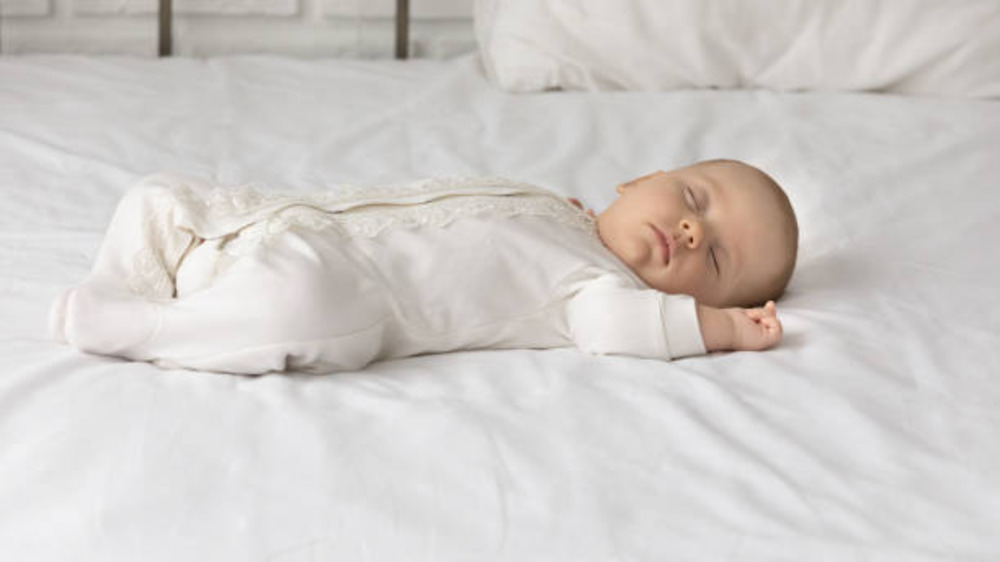
To ensure your baby’s head develops evenly and prevent flat spots, consider the following tips:
1. Provide plenty of tummy time
- Allow your baby to spend supervised time on their tummy while awake.
- Tummy time helps strengthen their neck, shoulder, and upper body muscles and reduces the pressure on the back of their heads.
- Gradually increase the duration as your baby grows.
2. Use a firm mattress
- Ensure that your baby sleeps on a firm and flat surface, such as a crib mattress.
- Avoid using soft surfaces, pillows, or other cushioning materials that could increase the risk of head flattening.
3. Avoid prolonged use of specific equipment or devices
- Limit the time your baby spends in devices such as car seats, bouncers, swings, or other reclining positions.
- Excessive time spent on these devices can contribute to the development of flat spots on the head.
4. Change your baby’s head position during sleep
- Encourage your baby to alternate their head position during sleep by changing the direction they face in the crib or bassinet.
- This can help prevent prolonged pressure on one area of the head.
5. Offer frequent breaks from pressure
- During awake times, provide breaks from pressure on the flat side of your baby’s head.
- Incorporate additional tummy time, holding your baby upright, or using a baby carrier to redistribute the pressure.
Remember, if you have any concerns about your baby’s head shape or development, it’s always recommended to consult with a healthcare provider. They can offer guidance tailored to your baby’s specific needs and provide further support in promoting healthy head development.
Source: American Academy of Pediatrics
Safe Sleep Recommendations
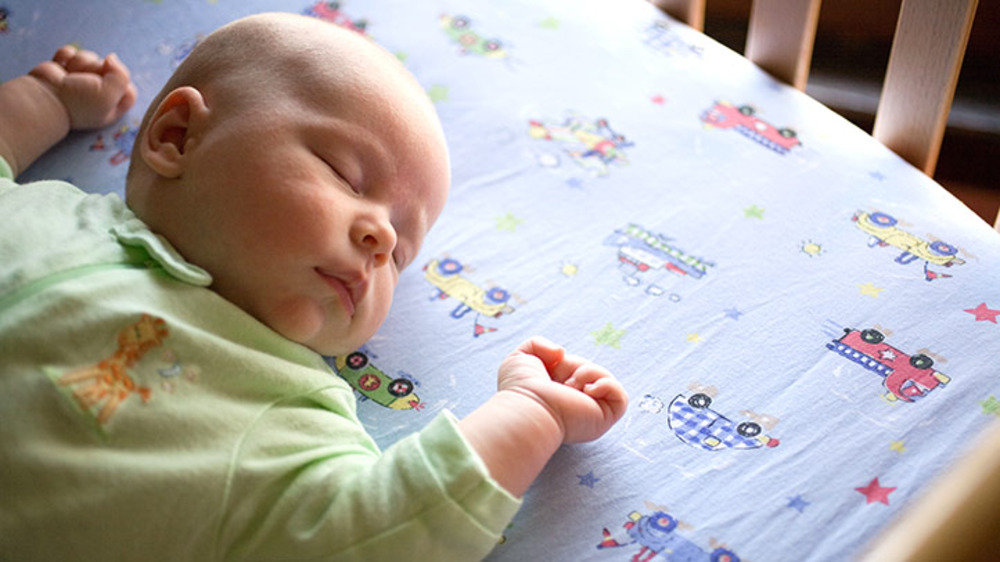
Ensuring a safe sleep environment is crucial for your baby’s well-being. Following the recommendations from reputable sources, such as the American Academy of Pediatrics (AAP), can greatly reduce the risk of Sudden Infant Death Syndrome (SIDS) and promote safe sleep practices.
Here are some key guidelines to keep in mind:
Back Sleeping
- Always place your baby on their back to sleep, both for naps and nighttime sleep.
- This position significantly decreases the risk of SIDS.
Safe Sleep Space
- Create a safe sleep space for your baby. Use a firm crib mattress with a fitted sheet, and avoid placing pillows, blankets, stuffed toys, or other loose bedding in the sleep area.
- Keep the crib free from items that may pose a suffocation or entrapment hazard.
ABCs of Safe Sleep
- Remember the ABCs of safe sleep: Alone, on their Back, and in a Crib.
- Your baby should sleep alone in their own crib or bassinet, on their back, and in a designated sleep space that meets safety standards.
Room-sharing
- Consider room-sharing with your baby for at least the first six months, but ideally until their first birthday.
- Having your baby sleep in the same room can facilitate monitoring and breastfeeding during the night.
Pacifier Use
- Offer a pacifier when placing your baby down for sleep.
- This has been shown to reduce the risk of SIDS.
- However, if the pacifier falls out of their mouth during sleep, there is no need to reinsert it.
Temperature Regulation
- Maintain a comfortable and safe temperature in the sleeping environment.
- Overheating can increase the risk of SIDS.
- Dress your baby in lightweight clothing for sleep and keep the room at a moderate temperature.
By following these recommendations, you can provide your baby with a safe sleep environment and minimize the risk of SIDS. Always consult with your healthcare provider regarding any concerns or questions about safe sleep practices for your baby.
Remember, your baby’s safety and well-being are paramount when it comes to establishing healthy sleep habits.
Risk Factors and Myths About Stomach Sleeping
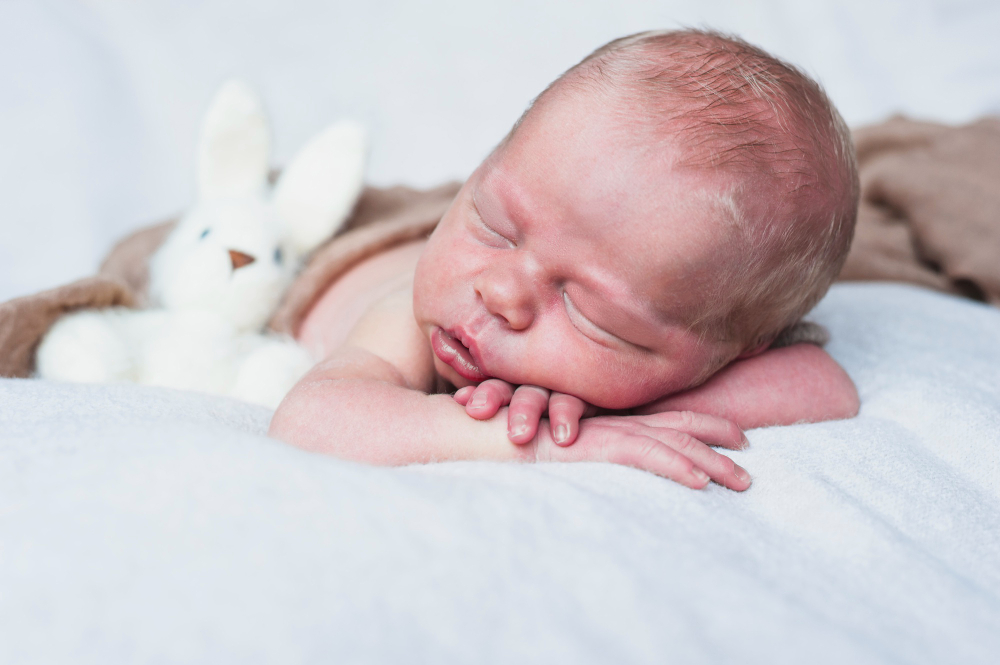
Several misconceptions and myths surround stomach sleeping for babies. Addressing these misconceptions and understanding the risks associated with this sleep position is important for practicing safe sleep for infants.
Myth: Stomach sleeping aids in digestion
- Contrary to popular belief, there is no evidence that stomach sleeping aids digestion for babies.
- In fact, placing infants on their stomachs during sleep can increase the risk of Sudden Infant Death Syndrome (SIDS) and other sleep-related incidents.
Myth: Snoring babies should sleep on their stomach
- Snoring in infants can be common and is often not a cause for concern.
- However, it’s essential to remember that placing a snoring baby on their stomach as a solution is not recommended.
- Stomach sleeping can pose risks such as restricted breathing, suffocation, and increased chances of overheating.
Risk Factors Associated with Stomach Sleeping
- Stomach sleeping carries several risk factors that parents should be aware of.
- Babies who sleep on their stomachs are at a higher risk of SIDS compared to those who sleep on their backs.
- Other factors, such as loose bedding, soft mattresses, and excessive soft objects in the sleep environment, can further increase the risk.
Emphasizing Safe Sleep Practices
- To ensure the safety of your baby during sleep, it is crucial to adhere to safe sleep practices recommended by reputable sources like the American Academy of Pediatrics.
- These practices include placing infants on their backs to sleep, creating a safe sleep environment free from hazards, and using a firm and properly fitted crib mattress with no loose bedding.
Remember, the safest sleep position for babies is on their backs. Always consult with your healthcare provider for personalized advice on safe sleep practices to ensure your little one’s well-being.


